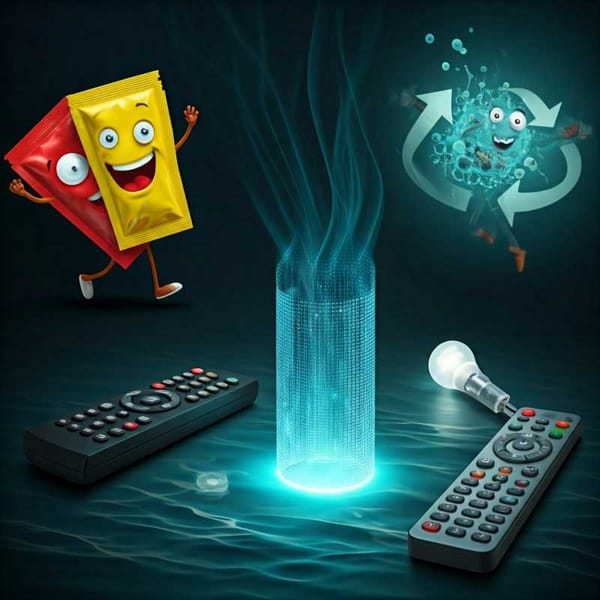Beyond the Twelve: Julián Carrillo and the Infinite Soundscape
Julián Carrillo's "Sound 13" revolutionized music by breaking the traditional 12-tone system. Inspired by subdividing violin strings, he discovered microtones—quarter, third, and even sixteenth tones—creating scales with 24, 36, or 96 notes.

“Sound 13 is the one that chronologically followed the twelve (Do, Do#, Re, Re#, Mi, Fa, Fa#, Sol, Sol#, La, La#, Si) that music had until the moment when I managed to break the classical cycle of existing sounds. I designated it thus, because it seemed to me -and it seems to me- the clearest, most logical, correct designation that I could find for the aesthetic problem that I have posed to the world: the Musical Revolution of Sound 13.”
This is how Julián Carrillo explained it in October 1936 on page 31 of the Revista Universidad de México. The Mexican composer, orchestra conductor, violinist and scientist, promoter of institutions such as the now Faculty of Music (FaM) and the National Conservatory of Music would turn 150 years old on January 28.
“His works must be recovered, made more available to anyone who wants to listen to them, they must be part of the study programs, necessarily in order to give them their place, no more, no less, giving them the importance they have in the history of music, not only in Mexico, but in the world,” said Héctor Pablo Silva Treviño, a specialist in composition and musical technology at the FaM of the UNAM.
In an interview he added that he is recognized as an outstanding researcher in microtonality, for which “in a certain way he gained his relevance and triumphed in posterity, because microtonality was incorporated into the contemporary musical language.”
He is significant in the history of Mexican music, Silva Treviño explained, but at the same time in order to make an evaluation we must place him in the context to which he belongs. He was born in 1875, at the end of the 19th century.
“His training was in German music, in Leipzig, Germany, while most of his contemporaries chose to go to France. "We must remember that Paris was that cultural mecca," said the university student.
Out of curiosity, as a violinist, one day he imagined what would happen if he had thinner and narrower fingers that corresponded to the notes he needed to play, because on that instrument there comes a time when the essential position is to put them together as close as possible. So, it occurred to him to use a knife to divide the strings to find intermediate positions between the notes, he said.
What he found, he added, was that you could in fact subdivide what was normally considered the minimum dimension of the semitone into even smaller units, and then he discovered what he later began to call Sound 13.
“What he came up with is not only semitones, but quarter tones, and then third tones, 16ths of tones, and what ends up happening is that he ends up building a scale of 24 tones, which, of course, if we have 12 semitones and we divide them in half, we have 24. And if we divide those 12 into three, each one has 36 notes; if we divide those 12 semitones into 16, we have 96, and that is how he ended up developing his system.”
However, Héctor Pablo Silva pointed out, it is not enough to define the above, it must be transformed into music, and he carried out the first experiments that led to the theme “Preludio a Colón”, in which he composed music with quarter tones, precisely because we have the idea of Columbus as the discoverer of a “new world”.
In an interview with Rafael Heliodoro Valle for the University of Mexico Magazine in 1936, the composer said that he discovered Sound 13 in 1895, so in 2025 it will be 130 years since the discovery.
In the conversation with Valle he pointed out: “The numbers have no end, and based on my experiments, I declare, before the entire world, that the musical systems discovered by me are as infinite as numbers, and among them there are worlds and worlds of musical systems that never produce tones or semitones. With all this arsenal, such a wealth of new intervals, new scales, new melodies, new harmonies is achieved, as musicians of the past, however great and brilliant they may have been, could never have imagined.”
It will also be a century since, in his role as orchestra conductor, together with three soloists, as well as with the choir of the students of the Composition class at the National Conservatory of Music and five instrumentalists, he offered the first microtonal concert to demonstrate his musical theories at the Teatro Principal, which was located at 30 Bolívar Street, Historic Center, on February 15, 1925.
Carrillo's great merit is to have been an inventive man who set out to design instruments to make this new music that he wanted to conceive, concluded the university researcher of sound synthesis and processing.







Julián Carrillo didn't just think outside the box, he sliced the box into tiny, musically delicious microtones. Happy 150th to the OG sound rebel! Credit: UNAM
Epigraph (to be revisited):
“The musical systems discovered by me are as infinite as numbers… worlds and worlds that never produce tones or semitones.”
— Julián Carrillo, 1936, from the edge of the audible.
Author’s Note: To hear Sound 13, press your ear to the space between C and C#. Listen closely. That static? It’s Carrillo, still slicing. 🎻🔪




